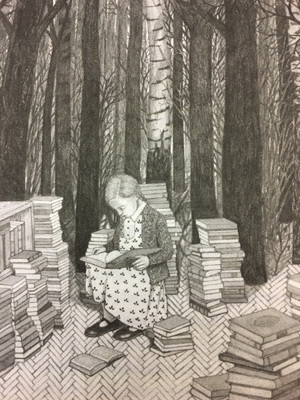It’s compelling how debut novelist Arja Kajermo handles the challenge of writing about a child’s mostly bleak and bare external life in relation to her rich inner life. “The Iron Age” presents a coming of age tale about a girl growing up in post-war Finland, first on a rural farm without electricity or indoor plumbing and then in urban Sweden with its foreign language and more cosmopolitan ways. Since children have a natural tendency toward make-believe and dreaming its tricky to negotiate the relationship between real life and the imagination within narrative. As a cartoonist by trade, Kajermo creatively manages this by showing her girl protagonist’s accounts of early life heavily infused with local folklore and her family’s mythology. Later when the girl discovers a love of reading she creatively fuses her experience with fairy tales and the stories she finds in books. This is all accompanied by sketches by Susanna Katermo Torner which reflect this fusion of fantasy and reality. It’s a creative way of presenting a particular childhood not just as narrative, but as an immersive experience.
Life in Finland after WWII was incredibly challenging given how war reparations needed to be paid to the Soviet Union for a number of years. As such, the girl’s father and many other working people found it difficult to gain decent paying jobs and many sought employment elsewhere. Living in relative isolation, the girl witnesses the strain this puts on her father and the misogynistic ways he takes his frustration out on her mother. There are striking scenes of emotional and physical abuse. What I found most powerful is a scene where the father gets so angry at the girl he’s about to beat her and the girl’s defensive tactic is to go silent. “There was a strange safety in not saying anything. It was like being very small inside a very big bomb shelter and looking out through narrow slits that were my eyes. I realized I was safe inside, looking out at a very angry man.” This is such an evocative way of describing a retreat to an inner life. In this silence, partly-inspired by the stories the girl discovers at a local library, she begins to fantasise and form stories of her own.
I enjoyed this deceptively simple and powerful novella that gives an episodic account of sensitive girl’s early life and the strength she discovers in silence.









